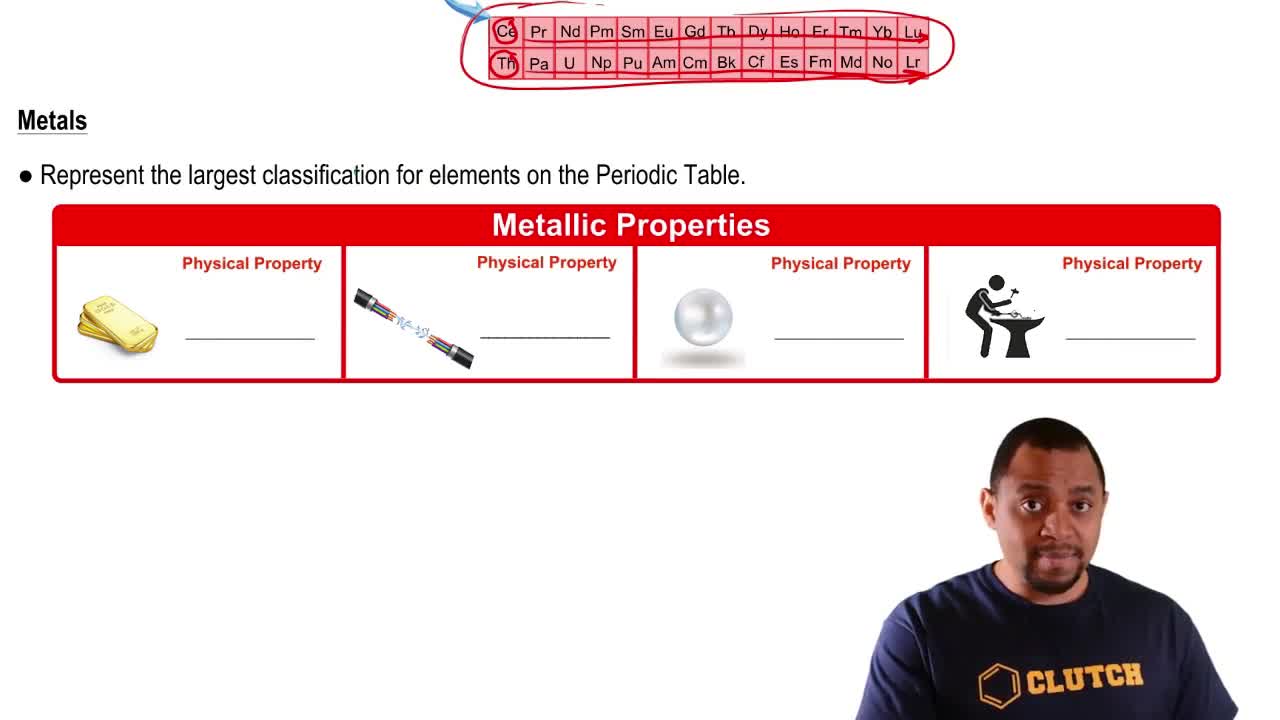Here are the essential concepts you must grasp in order to answer the question correctly.
Cations and Anions
Cations are positively charged ions formed when an atom loses one or more electrons, while anions are negatively charged ions formed when an atom gains electrons. The formation of cations is a common characteristic of metals, which tend to have low ionization energies, allowing them to easily lose electrons and achieve a stable electron configuration.
Recommended video:
Properties of Metals
Metals are typically characterized by their ability to conduct electricity and heat, malleability, ductility, and luster. They are found on the left side and in the center of the periodic table. Due to their atomic structure, metals have a tendency to lose electrons and form cations, which is a key aspect of their chemical behavior.
Recommended video:
Periodic Trends
Periodic trends refer to the predictable patterns observed in the properties of elements across the periodic table, such as electronegativity, ionization energy, and atomic radius. As you move from left to right across a period, elements become less metallic and more non-metallic, influencing their ability to form cations or anions. Understanding these trends helps in predicting the behavior of elements, including their tendency to form cations.
Recommended video:




